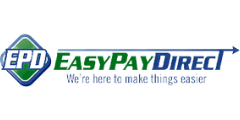summary

5/5
Best for
E-commerce companies, SaaS companies, "high-risk businesses", & established small/medium businesses ($500,000+ in annual sales)
Specializes in
Easy Pay Direct has unique gateway software and banking solutions to optimize payments for eCommerce, SaaS, information products, supplements, and CBD amongst other verticals.
Pricing Summary
Setup Fee: $99
Monthly Fee: $24.95
Swipe Rate: 1.59% + $0.17
Keyed-in Rate: 2.39% + $0.29
Early Termination Fee: $0 (domestic accounts)
Contract Terms:
summary

5/5
Best for
Merchants in various industries, including e-commerce, restaurants and many types of retailers in need of payment processing services for multiple payment types.
Specializes in
Bank Associates Merchant Services specializes in Level 2 and Level 3 payment processing solutions through its own proprietary software. This company also offers chargeback defense and dispute assistance to help merchants keep their chargebacks as low as possible.
Pricing Summary
Setup Fee: N/A
Monthly Fee: N/A
Swipe Rate: Unknown
Keyed-in Rate: Unknown
Early Termination Fee: $595
Contract Terms:
summary

4/5
Best for
High-Risk Merchants
Specializes in
High Risk
Pricing Summary
Setup Fee: None
Monthly Fee: None
Swipe Rate: Unknown
Keyed-in Rate: Unknown
Early Termination Fee: Unknown
Contract Terms:
For businesses operating using mail and telephone as the way to provide payment, having the ability to accept credit cards is key. The only way to accomplish this is by working with a payment processor.
By setting up a merchant account with a credit card processor, your business can gain the ability to:
Since the physical card is usually not present when you are processing a payment, the transactions of a MOTO business are often deemed to be a higher risk.
Typically, the largest and most popular credit card processors may not extend to businesses that are going to be classified as high risk.
As a result, you will need to use other payment processors. The good news is there are many reputable and experienced processors ready to work with MOTO businesses.
Each credit card processor establishes its internal criteria for deciding which businesses are considered high risk.
Such factors might include:
Since MOTO does not process physical cards, these transactions are considered card-not-present, which means there is a higher risk for fraud and consequently, chargebacks.
To mitigate the risk, a payment processor may charge different rates to these types of accounts.
They may also have unique plans or policies that they apply to high risk businesses.
Whenever a business is implementing new technology, it can be scary to change from established practices.
Adding payment processing to your business will allow for the ability to process payments among other benefits.
The good thing about MOTO businesses is you do not need a complicated and costly hardware setup.
Most businesses will only need what is called a virtual terminal. A virtual terminal can let your business access payments using any internet enabled device.
You can use a computer or tablet that is already in your possession and this will save on costs.
Sometimes you will connect to a virtual terminal through a website or from software that is installed locally. Usually, this can all be accomplished quickly without disrupting your business.
Since you will be using a virtual terminal, you can create different users and have your employees use it as well. Virtual terminals can be installed on multiple devices as well.
Your transaction information will be accessible to you so you can run reports and analyze sales information.
This sales analysis is an added value to payment processing.
Accessing this information can help inform future business decisions as you can identify trends.
By working with a credit card processor, you can store your customer’s account and card information for repeat purchases.
This can help speed up transactions for repeat customers and allow you to easily reference past orders.
There are many payment processors to choose from but not all processors offer the same rates and features. Here are some things to consider when choosing a processor.
Each payment processor will have its pricing model and it is important to understand the available types.
Four of the most popular models are:
Before you embark on the task of comparing processors, you should have a good idea of what your business’ own transaction patterns are like.
It is good to know your annual projected sales volume, your average sale amount, and how many transactions you anticipate per month.
These will help you be able to select the pricing model that is right for you.
Interchange rates are set by the card networks and the processing companies have no control over them. Interchange rates will be the same from processor to processor for your business.
Interchange fees can vary based on the card network, card type, and types of transactions.
Sometimes the interchange costs are referred to as wholesale costs.
In the Interchange-Plus pricing model, your billing statement will reference the interchange fees and then the additional markup that is charged by your processor. This is usually a percentage and a small flat fee.
The benefit of this model is you will profit from any fluctuation in interchange rates.
The drawback is that sometimes, these billing statements are difficult to read since they contain a thorough breakdown of charges.
This model is different from Interchange-Plus in that the interchange fees and markup from the processor are combined into one flat rate per transaction.
This bill will be easier to understand and the cost of processing might be easier to predict.
A drawback is that you will lose out on any potential savings in the fluctuation of interchange rates.
In this type of pricing model, the processor classifies transactions into predetermined categories.
The categories can vary by the processor but are typically something like Qualified, Mid-Qualified, and Non-Qualified. Various factors can go into what qualifies a transaction for the categories.
The Qualified level will be charged the lowest rates, while the Non-Qualified will be subject to the highest rates.
This type of model is favorable since it provides for savings with a varied rate based on transaction type, however, it can be hard to predict the cost of processing since you may not be able to anticipate where your transactions will be classified.
This model is similar to Interchange-Plus but replaces the per transaction percentage rate with a one-time monthly charge along with per transaction flat fees.
On a billing statement, you will still see interchange rates itemized but the percentage per transaction from the processor will not be applied.
For this model to make sense, you will need to crunch the numbers and see if the monthly membership fee can offer you savings based on your transaction levels.
As you can see, each of these models can have its advantages so you need to consider all of your options before settling on a solution.
With cybercrime on the rise, and not expected to go away any time soon, you will want to choose a processor that takes securing your customer data seriously.
Each year the Payment Card Industry Security Standards Council sets forth a set of best practice guidelines for payment processors and businesses to abide by.
These standards help to minimize the risk of security breaches. Businesses and processors are expected to implement them and can be subject to charges for failing to comply.
If a payment processor employs these measures, they are considered PCI Compliant.
Some examples of best practices are:
An ounce of prevention is worth a pound of cure so you should not underestimate the importance of working with a PCI compliant payment processor.
Since MOTO businesses experience higher chargeback rates compared to other businesses, you may want to select a processor that actively employs programs to combat them.
Some may have automated processes that work to alert you to chargebacks and help you resolve them.
Another layer of chargeback mitigation could be employing AVS (Address Verification Service) matching.
This is a service that seeks to have additional pieces of information provided that are associated with the card that match the records on file with the card networks.
If there is a mismatch, like an incorrect address is entered, it could alert you to a potentially fraudulent transaction.
If a transaction is processed with a full AVS match, it is easier for a business to win a card dispute if one arises.
Talk with your processor to see what features they can offer to mitigate the risks of chargebacks.
If you already have an established accounting system like QuickBooks, you will want to look for a payment processor that will allow you to seamlessly integrate these systems.
In this way, you will avoid doing double the work of reentering transaction information. Instead, look for one that would update your records automatically.
Most payment processors should have the ability to integrate with popular accounting platforms.
Payment processing is an important pillar of your business so you want to choose a partner that has a solid reputation in the industry.
It is worth the time to do a quick internet search for the processor to see if any negative reviews pop up. You may find insights about the processor that you weren’t aware of.
Conversely, you may find glowing reviews that reinforce your decision to use them for your card processing needs. Working with a company that has an established business might be wiser than choosing a company with recent inception.
You will also want to consider the availability of customer service support when choosing a payment processor. If something goes awry, you will want to be able to access live support when you need it most.
Some processors offer 24/7 live assistance while others may only be available during business hours. Having live support available when something isn’t working properly will save you time, stress, and potentially lost sales.
MOTO businesses are unique and can often be considered high risk for credit card processors.
Working with a payment processor gives your customers payment flexibility and provides value added features to your business operation.
When choosing a MOTO payment processor, it is important to consider what rates and fees your transactions will be subject to. Be sure to read any agreements carefully before signing so you know exactly what to expect.
Due to the nature of the card-not-present transactions, they are subject to a higher rate of fraud and chargebacks compared to other industries.
Choose a processor that provides a layered approach to securing your customers’ payment information and is PCI compliant.
Many payment processors that have experience working with high risk businesses can offer additional features that will help you mitigate chargebacks and even assist you if a dispute arises.
If you are already an established business, you may choose to go with a card processor that can integrate with the business systems you are already using. This will make adding this feature to your business a whole lot easier.
Finally, choose a payment processor that has a favorable reputation and established presence in the processing space. The level and availability of customer service they provide should also be considered so that you are covered in case something goes wrong.
Researching and comparing payment processors for your MOTO business can seem daunting, but by equipping yourself with knowledge, you will be able to make an informed decision. Taking the time to choose the best processor will save you time in the long run as you will avoid having to change processors.
Check out our top picks for the best MOTO Credit Card Processors: